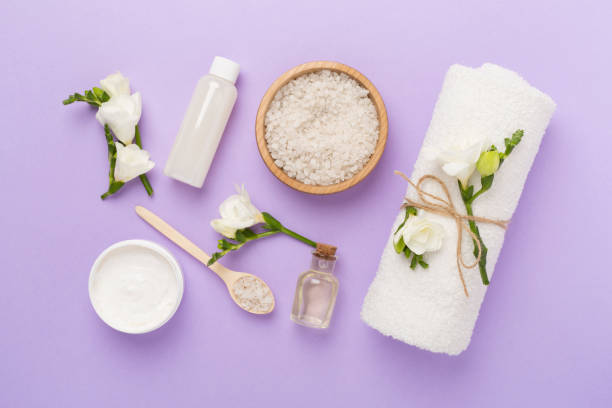Skincare Routine Order: What Goes First, and Why It Matters

Master Your Skincare Routine Order for Radiant Skin
Ever slapped on sunscreen before your serum and wondered why your skin didn’t glow? Guilty! I once layered my skincare like a sandwich, only to get a greasy mess. The *skincare routine order*—what goes first and why—is the secret to unlocking radiant skin. This 2025 guide dives into the *skincare steps* for your *morning routine* and *night skincare*, backed by science and expert tips. Whether you’re a skincare newbie or a glow-up pro, we’ll sort out your *skincare routine order* for maximum results. Want to perfect your beauty game? Check out natural beauty tips that work.

1. Why Skincare Routine Order Matters
The *skincare routine order* isn’t just a fancy ritual—it’s science. “Applying products in the correct sequence ensures active ingredients penetrate effectively,” says Dr. Heather Rogers [Dermstore]. Light formulas (like serums) go first to absorb into clean skin, while heavier creams seal everything in. Mess up the order, and you might block those pricey actives from working. I learned this the hard way when my Vitamin C serum sat on top of my moisturizer, doing nothing!
- Absorption: Thin products penetrate better on bare skin.
- Layering: Heavy creams lock in lighter serums.
- Efficacy: Actives like retinol need direct skin contact.
2. Morning Skincare Routine Order
Your *morning routine* preps your skin for the day, protecting it from pollution and UV rays. Nordstrom’s guide emphasizes a streamlined *skincare routine order* to kickstart your glow [Nordstrom]. Here’s the sequence, with tips to make each step count.
| Step | Product | Purpose |
|---|---|---|
| 1. Cleanser | Gentle foaming or cream cleanser | Removes overnight oils and sweat |
| 2. Toner | Hydrating toner | Balances pH and preps skin |
| 3. Eye Cream | Lightweight eye cream | Hydrates delicate under-eye area |
| 4. Serum | Vitamin C or antioxidant serum | Brightens and fights free radicals |
| 5. Moisturizer | Lightweight cream or gel | Hydrates and seals actives |
| 6. Sunscreen | SPF 30+ broad-spectrum | Protects from UV damage |
My morning routine transformed when I started using a hydrating toner. It’s like giving your skin a big glass of water before the day begins!
3. Night Skincare Routine Order
Your *night skincare* is all about repair and renewal. ISDIN’s guide highlights a restorative *skincare routine order* for nighttime [ISDIN]. Here’s how to layer for glowing skin by morning.
| Step | Product | Purpose |
|---|---|---|
| 1. Makeup Remover | Micellar water or cleansing balm | Removes makeup and SPF |
| 2. Cleanser | Gentle or double cleanse | Cleanses deeply |
| 3. Eye Cream | Restorative eye cream | Reduces puffiness |
| 4. Treatment | Retinol or exfoliating acid | Renews and repairs |
| 5. Serum | Hyaluronic acid or peptide serum | Hydrates and firms |
| 6. Moisturizer | Rich night cream | Seals in treatments |
I started double-cleansing at night, and it’s like my skin finally learned to breathe. No more clogged pores!
4. Key Ingredients for Each Skincare Step
The right ingredients supercharge your *skincare routine order*. Nordstrom suggests picking products tailored to your skin’s needs [Nordstrom]. Here’s what to look for to make each step pop.
- Cleanser: Aloe vera, chamomile for soothing cleansing.
- Toner: Witch hazel, rose water for balancing.
- Eye Cream: Caffeine, peptides to reduce puffiness.
- Serum: Vitamin C, hyaluronic acid for brightness.
- Treatment: Retinol, salicylic acid for renewal.
- Sunscreen: Zinc oxide, titanium dioxide for UV protection.
Editor’s Pick: Top Skincare Products for 2025
- Morning Cleanser: CeraVe Foaming Cleanser – Gentle for all skin types.
- Morning Serum: The Ordinary Vitamin C Suspension – Brightens instantly.
- Night Makeup Remover: Bioderma Sensibio Micellar Water – Melts makeup effortlessly.
- Night Treatment: Paula’s Choice 2% BHA Liquid – Exfoliates without irritation.
I switched to a Vitamin C serum in my morning routine, and my skin’s glow could rival a sunrise!
5. Tailoring Your Routine for Skin Types
Your skin type—dry, oily, combination, or sensitive—affects your *skincare routine order*. ISDIN’s guide notes that product textures should match your skin’s needs [ISDIN]. Here’s how to tweak the sequence.
- Dry Skin: Use cream-based cleansers and rich moisturizers to lock in hydration.
- Oily Skin: Opt for foaming cleansers and lightweight, oil-free serums.
- Combination Skin: Balance with a gentle cleanser and targeted serums for T-zone and cheeks.
- Sensitive Skin: Choose fragrance-free products and soothing ingredients like aloe.
My combination skin loves a lightweight serum in the morning, but I go heavier with a night cream to keep my cheeks happy.

Want to pair your skincare with flawless makeup?
6. Common Mistakes to Avoid
I once applied retinol before my cleanser—yep, it was like washing away $50! Dermstore warns against these *skincare routine order* mistakes [Dermstore].
- Wrong Order: Apply serums before moisturizers to avoid blocking actives.
- Skipping Sunscreen: UV damage happens daily, even indoors.
- Overloading Actives: Mixing retinol and acids can irritate skin.
- Rushing Layers: Give each product time to absorb before the next.

7. Conclusion: Layer Like a Pro
Nailing the *skincare routine order* is your shortcut to glowing skin in 2025. From cleanser to SPF in the morning and makeup remover to night cream, each *skincare step* builds on the last. I’ve seen my skin transform since I stopped guessing the order—now it’s your turn! Share your routine in the comments or explore foundation for your skin type for more beauty tips.
Frequently Asked Questions
Sources
- Nordstrom.
Skin Care Routine Order: Morning vs. Night.
Outlines morning and night skincare steps for optimal results.
https://www.nordstrom.com/browse/content/blog/skin-care-routine-order. - ISDIN.
What Goes First? Your Step-by-Step Guide to Building a Skincare Routine.
Details the correct order for morning and night skincare products.
https://www.isdin.com/us/blog/skincare/routines/the-ultimate-skin-beauty-routine-day-night/. - Dermstore.
Does the Order You Apply Your Skincare Products Really Matter?
Emphasizes the importance of skincare routine order for effective absorption.
https://www.dermstore.com/blog/how-to/what-order-do-i-apply-my-skin-care-products/.



